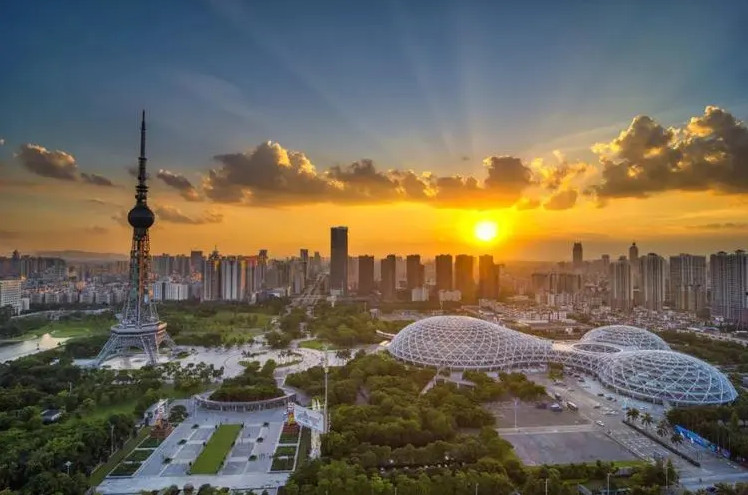1.Climb Xiqiao Mountain
The Xiqiao Mountain Scenic Area, located in Nanhai District, Foshan, Guangdong. It is one of the four famous mountains in Guangdong, known for its rich history and natural resources. As an extinct volcano, it features unique geological landscapes, including 72 peaks, 42 caves, 28 waterfalls, and 232 springs.
Xiqiao Mountain is recognized as a national key scenic area and will offer free admission starting October 1, 2024, making it the first AAAA-rated tourist site in Foshan to do so. The area is rich in biodiversity, with over 800 plant species, and includes significant cultural sites like the Baofeng Temple and the Huang Feihong Martial Arts Museum. The region is also known for its mild climate and historical significance, dating back to the Neolithic era.
Features: Xiqiao Mountain is renowned for its natural beauty and cultural heritage. Key attractions include the Nanhai Guanyin, a 61.9-meter tall statue, and Baofeng Temple, a popular site for prayers and blessings.
Travel Tips: Wear comfortable hiking shoes and bring enough water and snacks. Plan to spend a full day exploring the various attractions on the mountain.
Transportation: Take a bus or drive from downtown Foshan to Xiqiao Mountain. Buses to Xiqiao Mountain Station take about an hour.
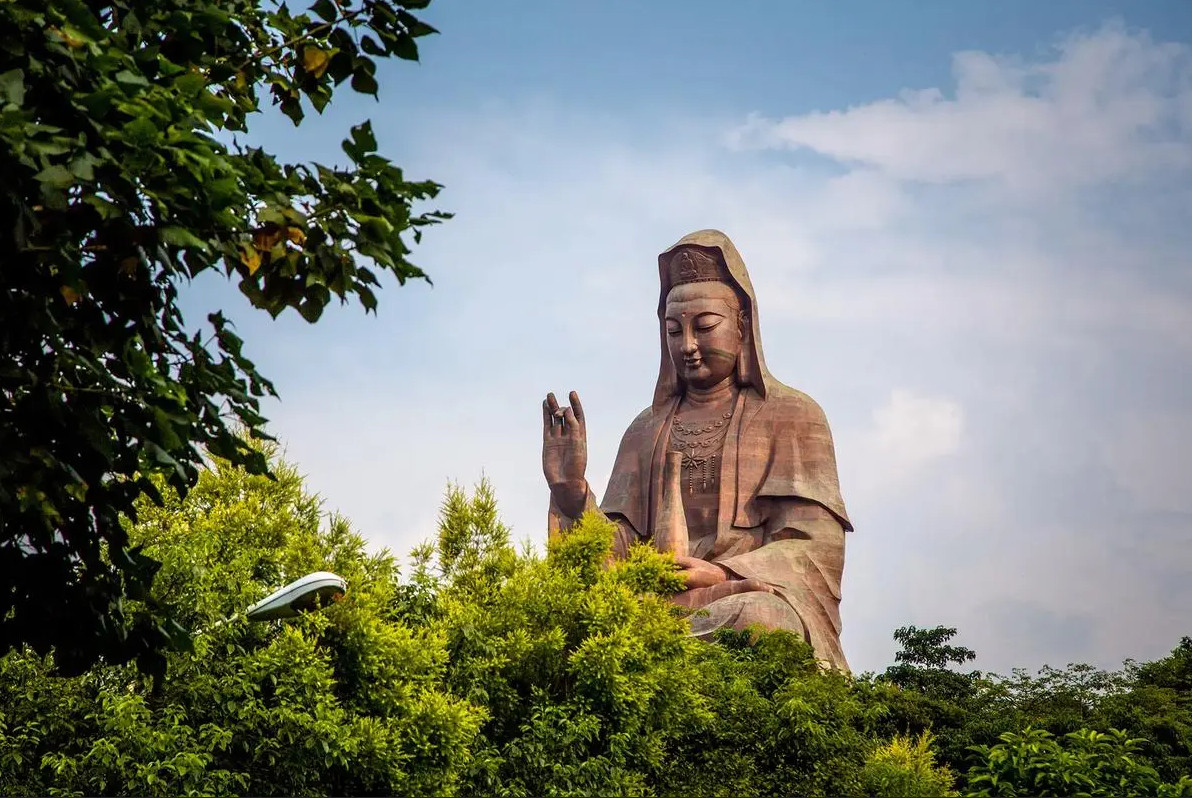
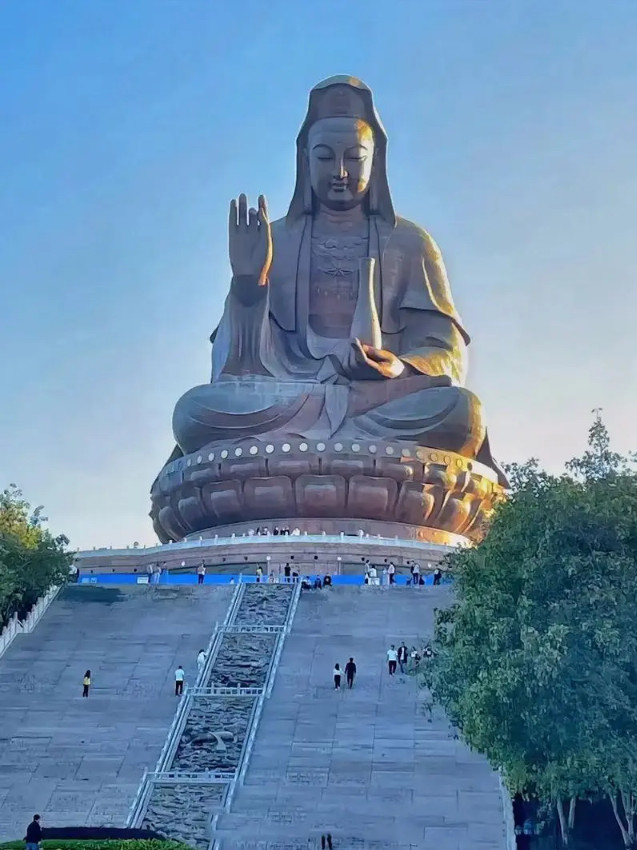
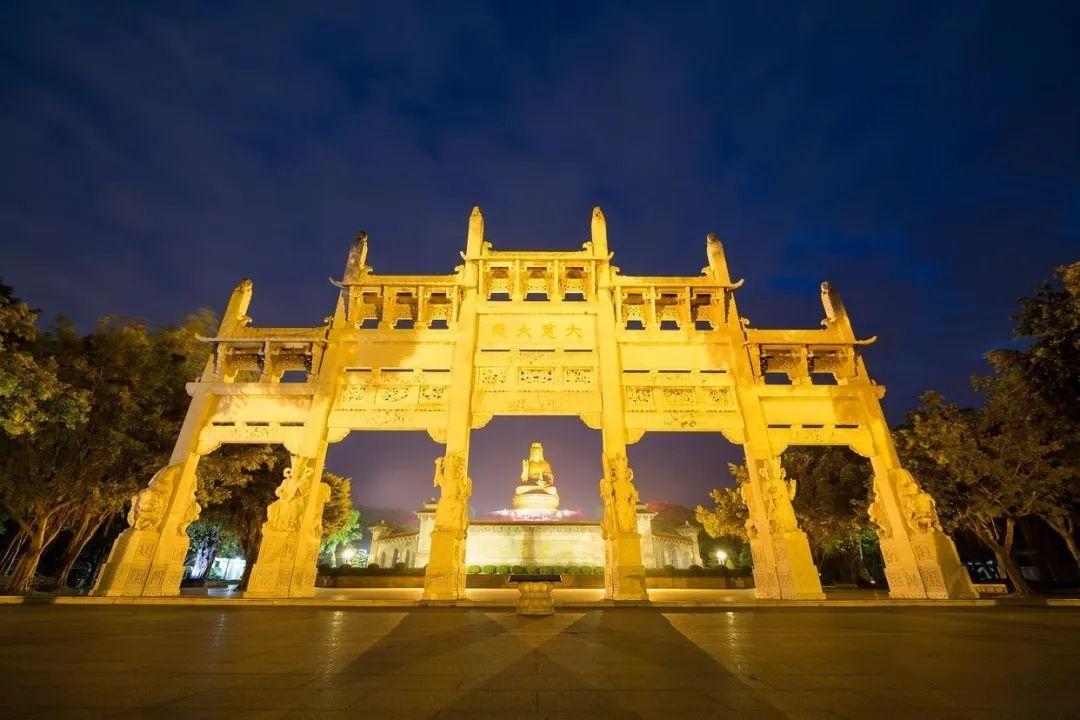
2. Visit the Foshan Ancestral Temple
The Foshan Ancestor Temple, also known as the North Emperor Temple, is located in Foshan, Guangdong Province. Established during the Northern Song Dynasty (1078-1085), it honors the Taoist deity Zhenwu. The temple complex, covering 3,500 square meters, features a variety of traditional architectural elements, including wooden and stone structures adorned with intricate carvings and sculptures. It has undergone several renovations over the centuries and was designated a national key cultural relic in 1996. The temple is a significant cultural site, reflecting the rich history and craftsmanship of the region, and serves as a center for local worship and community gatherings.
Foshan Ancestral Temple, one of the three treasures of Lingnan, was built during the Northern Song Dynasty. It features local architectural styles and houses the Confucius Temple, Huang Feihong Memorial Hall, and Ip Man Hall.
Features: The temple is famous for its exquisite architecture and carvings, including pottery, grey sculptures, wood carvings, and brick carvings. The memorial halls showcase Foshan’s martial arts culture.
Travel Tips: Visit in the morning or late afternoon to avoid the midday heat. Consider hiring a guide to explain the rich cultural displays.
Transportation: Take the Guangzhou-Foshan Metro to Zumiao Station and walk to the temple. Buses to Zumiao Road Station are also available.
3.Tour Qinghui Garden
Qinghui Garden, one of the four famous gardens in Guangdong, is located in Daliang Town, Shunde District. The garden features intricate designs centered around water, with rockeries, bridges, pavilions, and towers.
Qinghui Garden is a historic Lingnan garden built during the Ming Dynasty, covering an area of 22,500 square meters. It features various architectural structures such as the Ship Hall and the Pavilion of Clear Ripples, surrounded by over 200 plant species, including ancient trees. Once a residence for notable families, it is recognized as one of China’s top ten gardens and a cultural heritage site. The garden combines traditional Chinese architecture with artistic elements, creating a harmonious landscape that reflects the essence of Lingnan gardens. Qinghui Garden has undergone several renovations and expansions, enhancing its appeal as a tourist destination.
Features: Qinghui Garden showcases typical Lingnan garden styles, with a variety of trees and architectural elements. The garden is adorned with ceramics, grey sculptures, wood carvings, and stained glass artworks.
Travel Tips: Visit during spring or autumn when the garden is lush and vibrant. Allocate half a day to explore the various attractions within the garden.
Transportation: Take a bus or drive from downtown Foshan to Qinghui Garden. Buses to Qinghui Garden Station take about an hour.
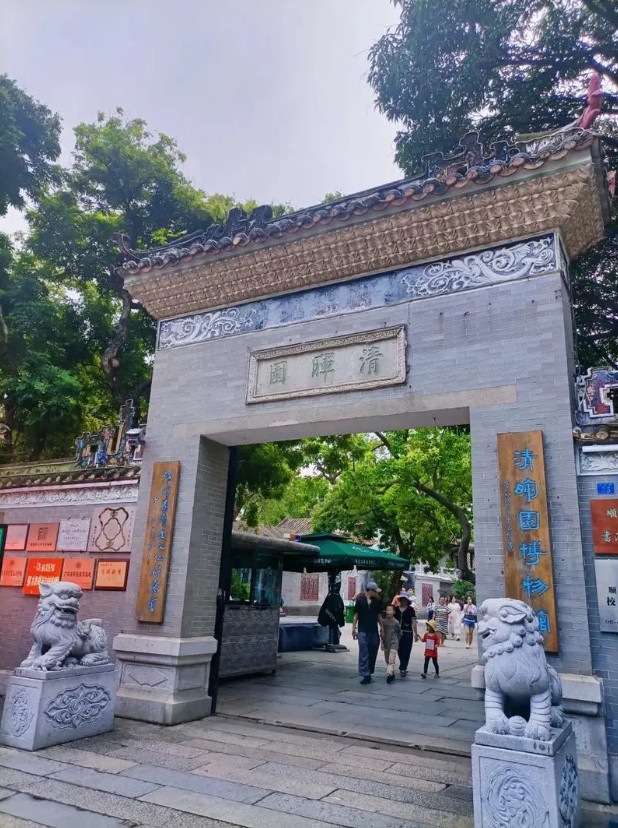
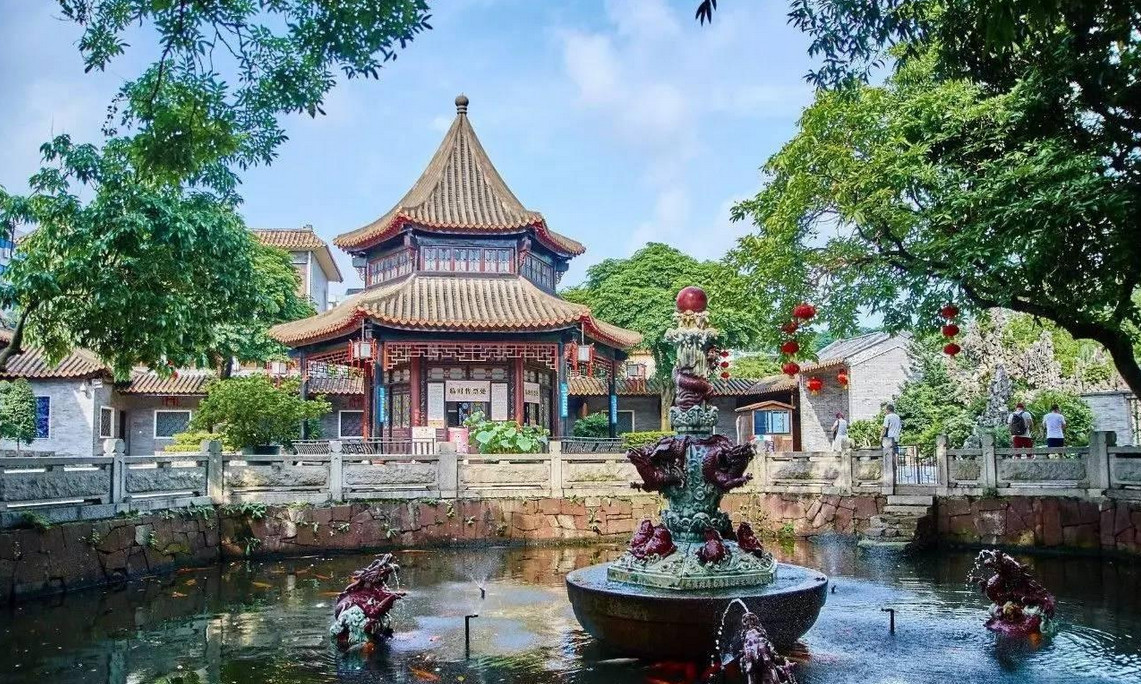
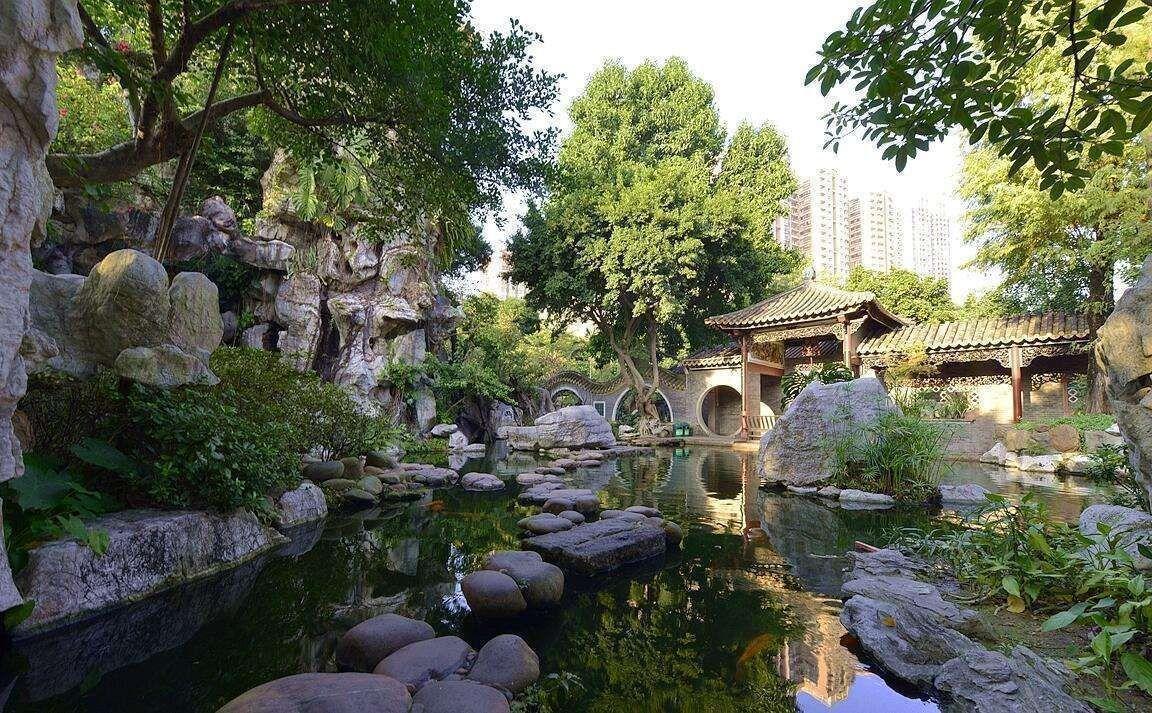
4. Explore OCT Harbour Plus
OCT Harbour Plus is a major tourism development project in Guangdong, covering 3.36 square kilometers in Shunde District, Foshan. It combines shopping, theme parks, cultural experiences, and ecological wetlands, showcasing traditional Cantonese culture and cuisine. The site features over 70 food vendors, a food museum, and various attractions, including a Ferris wheel and a water park. Since its soft opening in September 2019, it has attracted hundreds of thousands of visitors, highlighting its role as a cultural and culinary hub in the Guangdong-Hong Kong-Macau Greater Bay Area. The project aims to promote Shunde as a “World Food Capital” and enhance local tourism.
Features: The park offers a variety of amusement facilities and performances, making it ideal for families and friends. It breaks the traditional one-ticket system, allowing visitors to choose different projects based on their interests.
Travel Tips: Purchase tickets online in advance to avoid queues. The park has several dining areas, so you can bring your own food or dine within the park.
Transportation: Take a bus or drive from downtown Foshan to OCT Harbour Plus. Buses to Happy Coast Station take about an hour.
5.Visit the Ancient Nanfeng Kiln
Nanfeng Ancient Kiln, also known as “Dragon Kiln,” is located in Shawan Town, Foshan City, Guangdong Province, and has been in operation since the Ming Dynasty (1506-1521). It is recognized as the world’s best-preserved and longest-used traditional wood-fired dragon kiln, holding a Guinness World Record. The kiln is significant for studying the evolution of pottery production techniques in China during the Ming and Qing dynasties. In 2001, it was designated a national key cultural relic, and in 2019, it was recognized as a national industrial heritage site. Starting July 6, 2024, it will be open for free to local residents and university students. The kiln has undergone various renovations and cultural activities to preserve its historical and artistic value, making it a vital part of China’s ceramic heritage.
It it is one of the oldest dragon kilns still in use today.
Features: The kiln showcases traditional ceramic-making techniques, and visitors can try their hand at pottery. The site also includes a ceramics museum and a peacock garden.
Travel Tips: Wear comfortable clothing and bring a camera to capture the pottery-making process. Plan to spend half a day exploring the various activities.
Transportation: Take a bus or drive from downtown Foshan to the Ancient Nanfeng Kiln. Buses to Nanfeng Kiln Station take about 30 minutes.
6.Explore Changlu Tourism and Leisure Park
Chuanlord Tourism & Leisure Expo Park, located in Shunde District, Foshan, Guangdong, is a national 5A-rated tourist attraction that opened in 2000. The park features ten themed areas, including an amusement park, a fairy tale animal kingdom, and a military-themed park, among others. It offers a variety of accommodations, including themed hotels and over 80 restaurants, with the largest seating over 3,800 guests. The park is designed for leisure, entertainment, and educational experiences, making it an ideal destination for family outings, business meetings, and relaxation.
Features: The park is known for its diverse attractions, including animal shows, water slides, and thrilling rides. It is a perfect destination for family outings.
Travel Tips: Visit during weekdays to avoid crowds. Bring swimwear if you plan to visit the water park and sunscreen to protect against the sun.
Transportation: Take a bus or drive from downtown Foshan to Changlu Tourism and Leisure Park. Buses to Changlu Park Station take about an hour.
7.Stroll Around Liang’s Garden
Liang Garden, located in Foshan, Guangdong Province, covers an area of 21,260 square meters and is a prime example of Lingnan garden architecture. Built between 1796 and 1850 by the Liang family, it features distinct structures like the “Wudaixie Studio” and “Hanxiang Pavilion,” showcasing elegant design and rich cultural heritage. The garden is known for its unique layout, beautiful landscaping, and integration of residential and ceremonial spaces. Recognized as a key cultural heritage site in 1989, Liang Garden has undergone significant restoration and expansion, making it a popular destination for visitors to experience traditional Chinese garden aesthetics.
Liang’s Garden is one of the four famous gardens in Guangdong. It combines traditional Lingnan architecture with beautiful natural landscapes.
Features: The garden features elegant pavilions, winding corridors, and serene ponds. It is a prime example of Lingnan garden design, with intricate carvings and lush greenery.
Travel Tips: Visit in the early morning or late afternoon for the best lighting for photography. Allocate a few hours to leisurely explore the garden.
Transportation: Take a bus or drive from downtown Foshan to Liang’s Garden. Buses to Liang’s Garden Station take about 30 minutes.
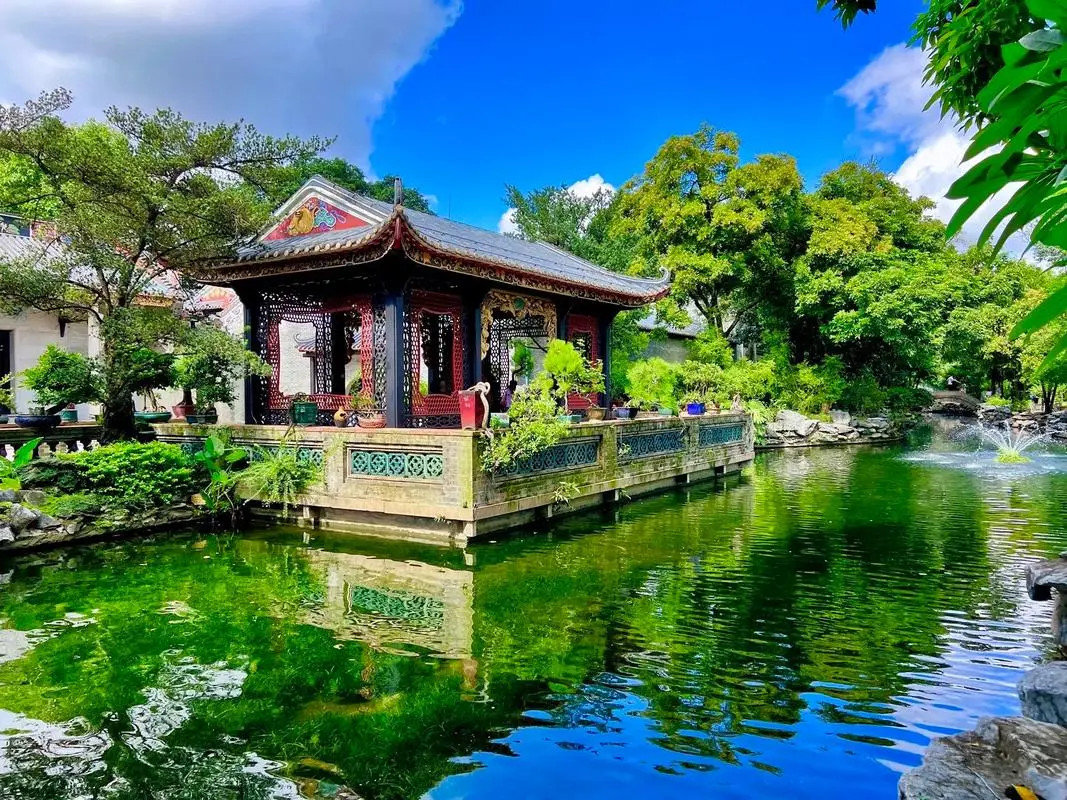
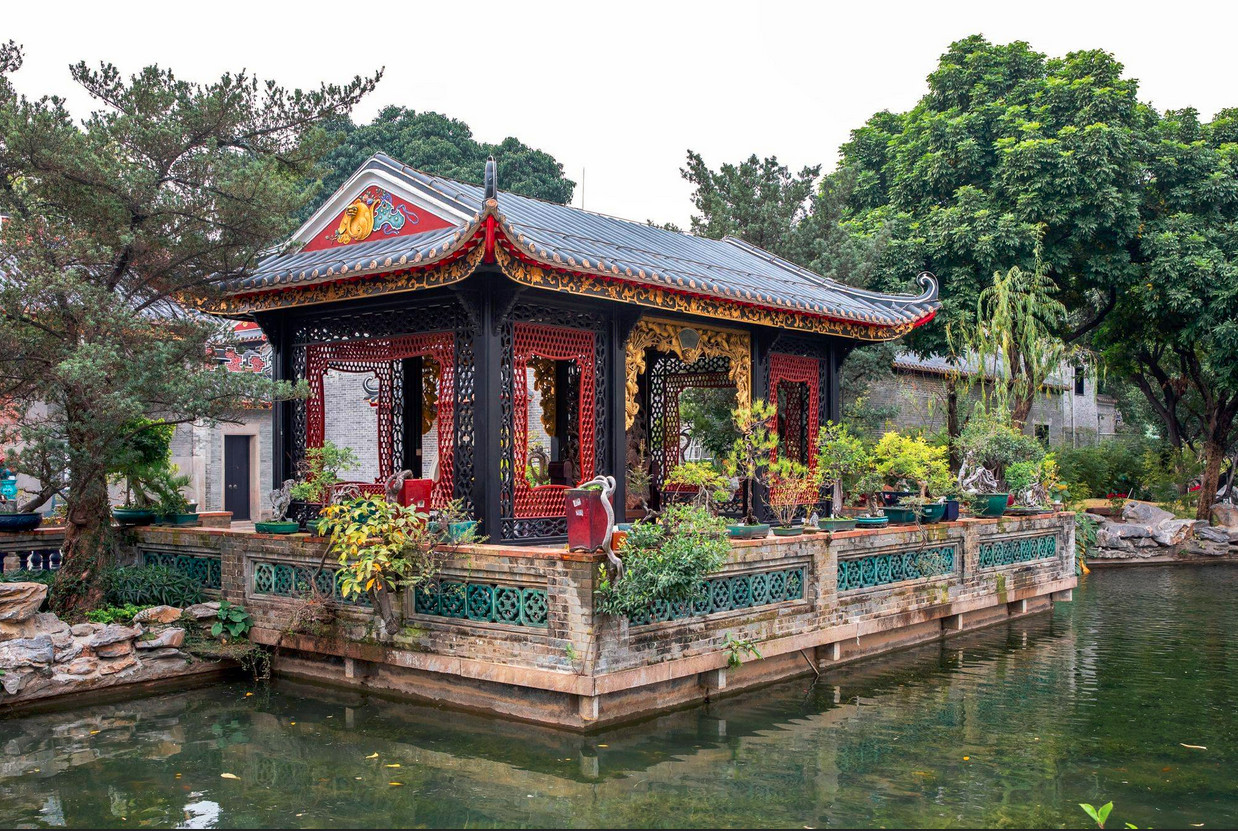
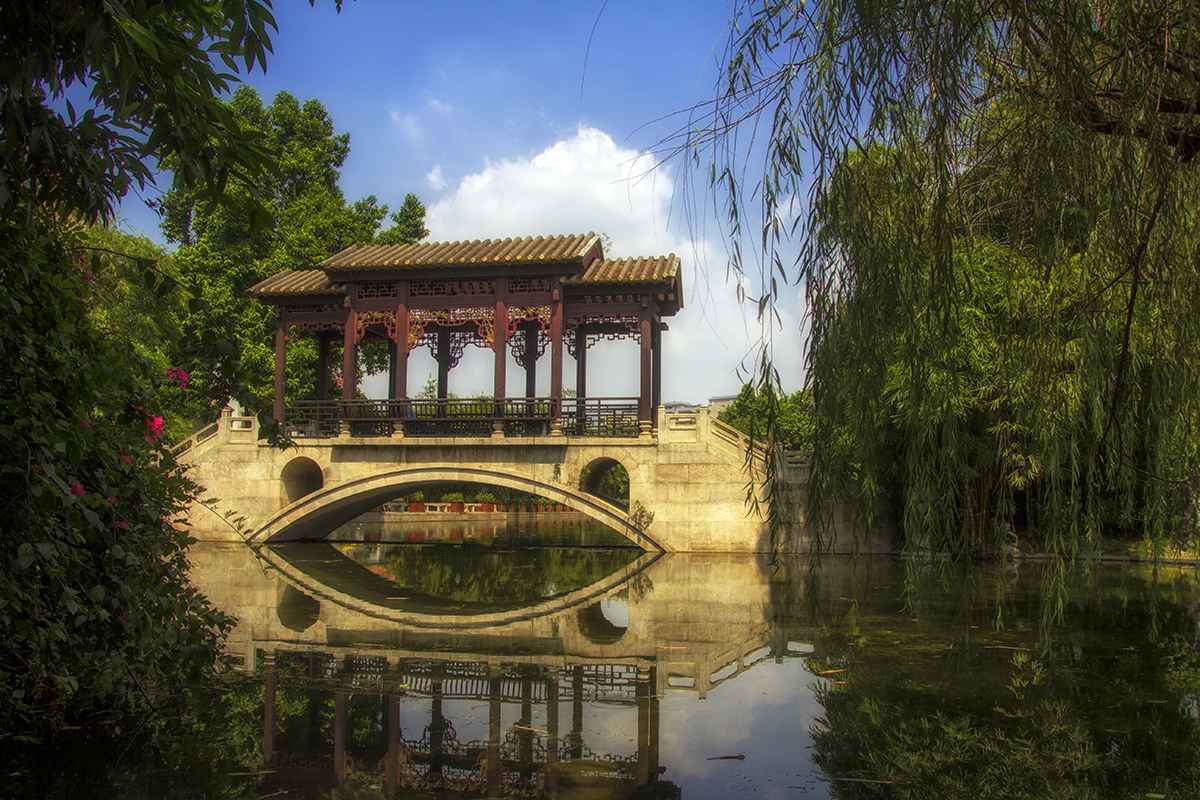
8. Visit Nanguo Peach Garden
Nanguo Peach Garden is a scenic area in Foshan, known for its peach blossoms in spring. The garden covers a large area and offers beautiful natural scenery.
Features: The garden is famous for its peach blossoms, which attract many visitors during the blooming season. It also features walking trails and picnic areas.
Travel Tips: Visit in the spring to see the peach blossoms in full bloom. Wear comfortable walking shoes and bring a picnic if you plan to spend the day.
Transportation: Take a bus or drive from downtown Foshan to Nanguo Peach Garden. Buses to Peach Garden Station take about an hour.
9. Enjoy Sanshui Lotus World
Sanshui Lotus World is a large park in Foshan’s Sanshui District, dedicated to the cultivation and display of lotus flowers. The park covers a vast area and features numerous lotus ponds.
Features: The park is known for its extensive collection of lotus flowers, which bloom in various colors and sizes. It also includes walking paths, pavilions, and viewing platforms.
Travel Tips: Visit during the summer when the lotus flowers are in full bloom. Bring a hat and sunscreen to protect against the sun.
Transportation: Take a bus or drive from downtown Foshan to Sanshui Lotus World. Buses to Lotus World Station take about an hour.
